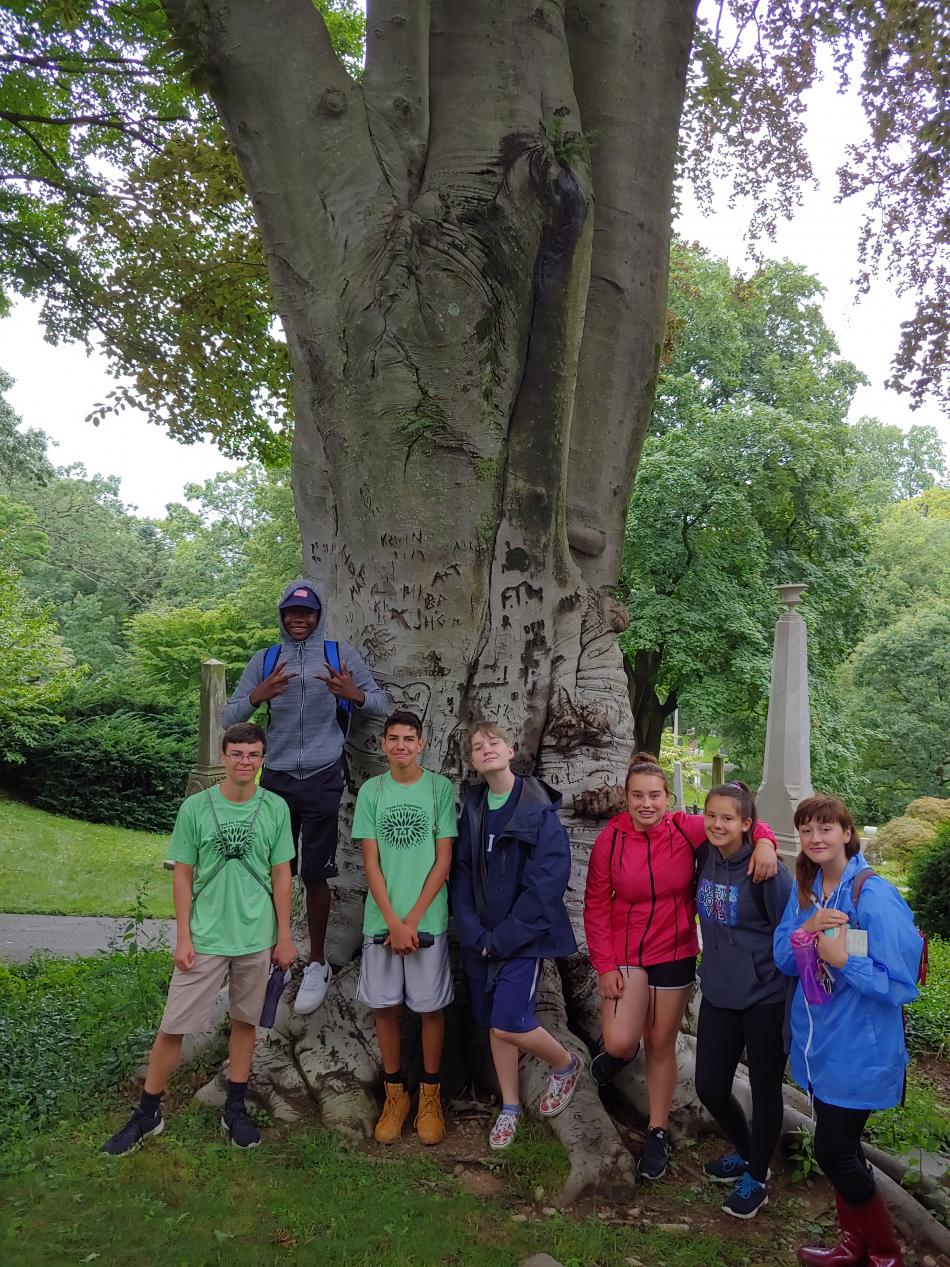Cities around the US are becoming less green. The Nature Conservancy reports that cities are losing about 4 million trees each year, which is 1.3 percent of the total urban tree stock. But as global temperatures increase, this tree loss can exacerbate our issues in multiple ways. Reversing this trend and adding to Watertown’s urban tree canopy must be part of our climate change response. It’s also important to keep in mind how our tree canopy is distributed; as you can see from this Tree Equity Score map, some parts of town have fewer trees than others. (Read more about urban tree cover and social equity in this article).
Watertown is committed to fostering the health of our existing trees and incorporating planting programs into our municipal planning with projects like Resilient Watertown. In fact, we have some breaking news—Watertown was awarded an MVP Action Grant from the state for a new Equity-Based Community Greening Program! We will use these awarded funds to identify climate-vulnerable areas of Watertown, engage with those communities, and design green streets interventions and locate street trees in the areas of most need. In honor of this exciting award, let's take a closer look at some of the benefits of urban trees!
5 surprising benefits of urban trees
1. Cooling and heating
We’ve had multiple heat waves during summer 2021. With climate change, summers will continue to get hotter and trees are crucial to protect us and our neighborhoods against dangerous heat. Urban tree cover prevents heat-related deaths and countless heat-related illnesses every year. This ability of trees to protect people from heat is significant, given that a 10-fold increase in heat-related deaths is expected in the Eastern U.S. by 2050. Trees also reduce building energy use when they provide shade. Nationwide in the U.S., trees reduce energy use for heating and cooling by 7.2%, on average!
According to the Nature Conservancy: “Thanks to the shade they provide and water they release into the atmosphere, trees reduce summer air temperatures by an average of 2-4° Fahrenheit, although under some circumstances the cooling effect can be even larger.”
2. Storing carbon
You may have known that trees are valuable to protect us against the impacts of climate change, but did you know that urban trees are especially valuable? They play a key role in storing carbon in cities. In fact, trees in urban areas of the U.S. are responsible for 20 percent of all of the carbon emissions that forests in the U.S. capture and store. That equals nearly two percent of overall U.S. carbon emissions! Planting more trees and maintaining existing tree canopy can help Watertown reach its GHG reduction goals that are being defined through our Resilient Watertown planning process.
3. Improving air quality
To understand how this happens, let's get technical! Through the pores or stomata of tree leaves, trees also absorb pollutants in our air, such as nitrogen oxides and sulfur dioxide. This air-filtering process reduces respiratory illnesses in humans, like asthma. Trees across the U.S. absorb 17.4 million tons of air pollutants, preventing 670,000 cases of asthma and other acute respiratory symptoms annually, according to American Forests.org. So planting more trees can help adults and children breathe easier while they walk or play outside.
4. Reducing noise pollution
It turns out trees don’t just absorb pollutants- they also absorb noise! Tree parts, such as stems, leaves, and bark absorb sound and act as noise barriers. Interested in how exactly this works? Check out the science! This benefit is crucial in dense urban areas and where commercial or industrial activity occurs.
5. Mitigating stress
Since trees improve the air we breathe and make our surroundings cooler and quieter, no wonder they can make us more relaxed! Studies have shown that a proximity to trees and green space can reduce stress and anxiety in humans. It may be that some of these benefits have to do with how trees affect our brains. One study found that people living in proximity to trees had better “amygdala integrity”—meaning, a brain structure better able to handle stressors.
All of these benefits highlight the importance of making sure trees are equitably distributed and maintained, so that everyone benefits from the amazing ways trees help us live more comfortably.
Meet 2 community groups that are protecting trees in Watertown
Our community is focused and passionate about the trees that offer our community so many benefits. Check out these two local grassroots organizations that advocate and educate about trees:
- Trees for Watertown
- See the TFW’s symposium on trees here.
- Teens for Trees
These groups can help you find ways to participate in growing our urban forest in your own way (i.e., plant a tree, donate, volunteer, be an advocate).
Is there a special tree in your neighborhood that brings you joy? Add interesting, beautiful, or personally resonating trees to this crowd-sourced Watertown tree map! Or go out on a scavenger hunt around our community to find remarkable trees!
With all these benefits, it’s clear that trees are not just beautiful but functional and critical as well.
There is still work to be done when it comes to planting and maintaining tree cover. While the majority of our public street trees are healthy, they make up only half the available places for a street tree to be planted. And of our total land cover, trees make up 20%, while impervious surface like roads and pavement, make up nearly 57%. Our Climate and Energy Plan, Resilient Watertown, will be planning for a healthy, green community by supporting tree cover, adding green infrastructure, and strategizing how to create more open space.
Want to learn more about the benefits of trees? Check out this list of resources!
Everyone can be part of building a greener Watertown! Check out some ways to take action today, like taking care of your trees and planting more!

